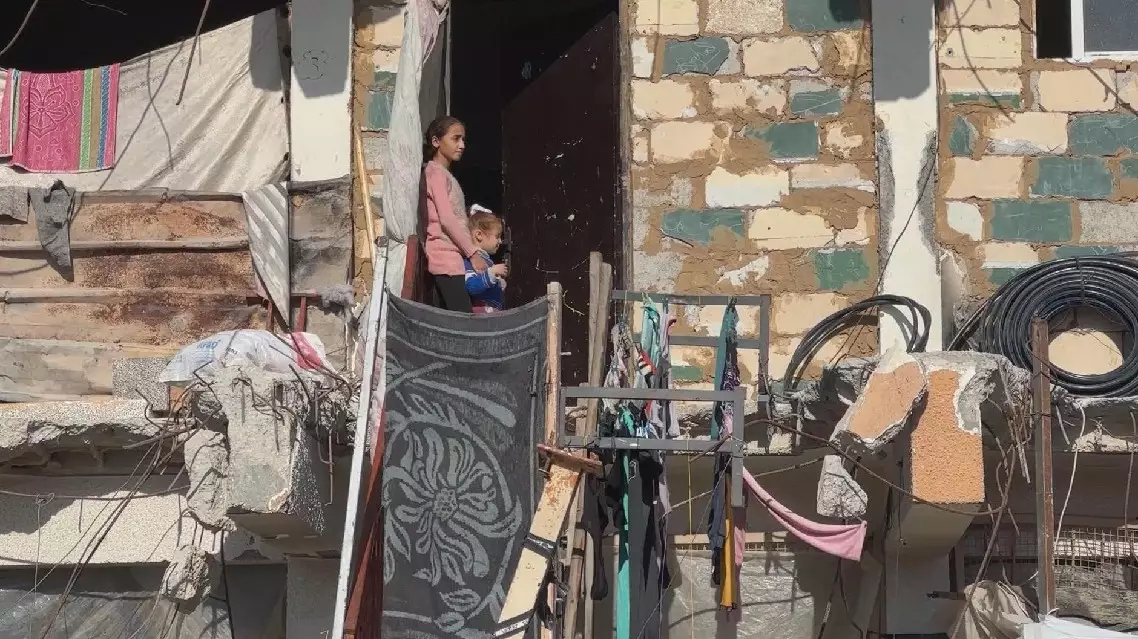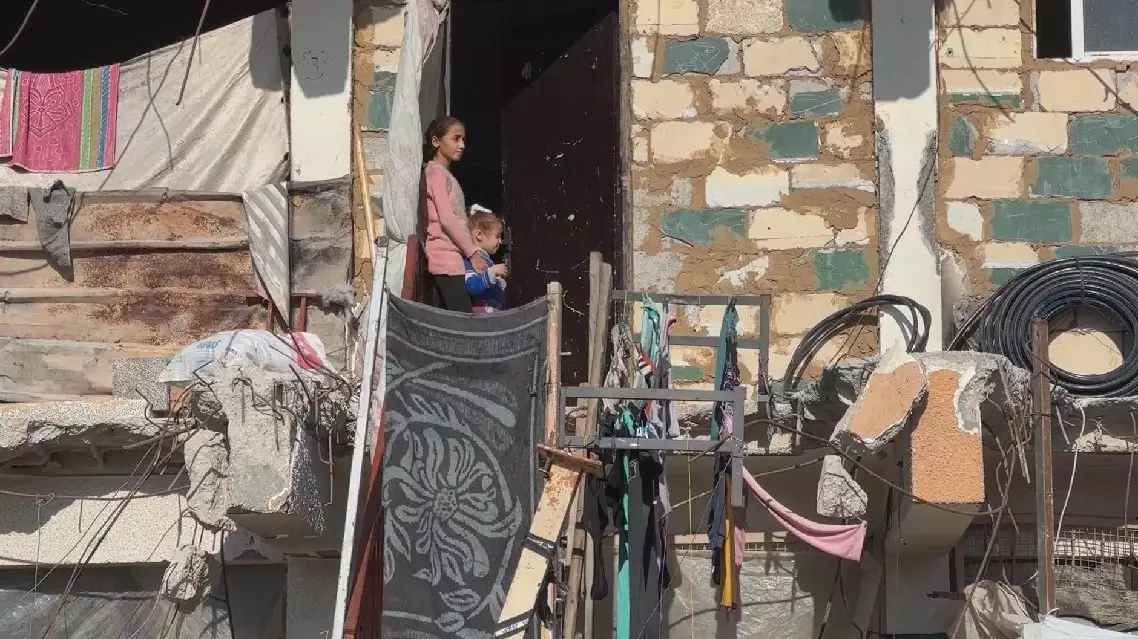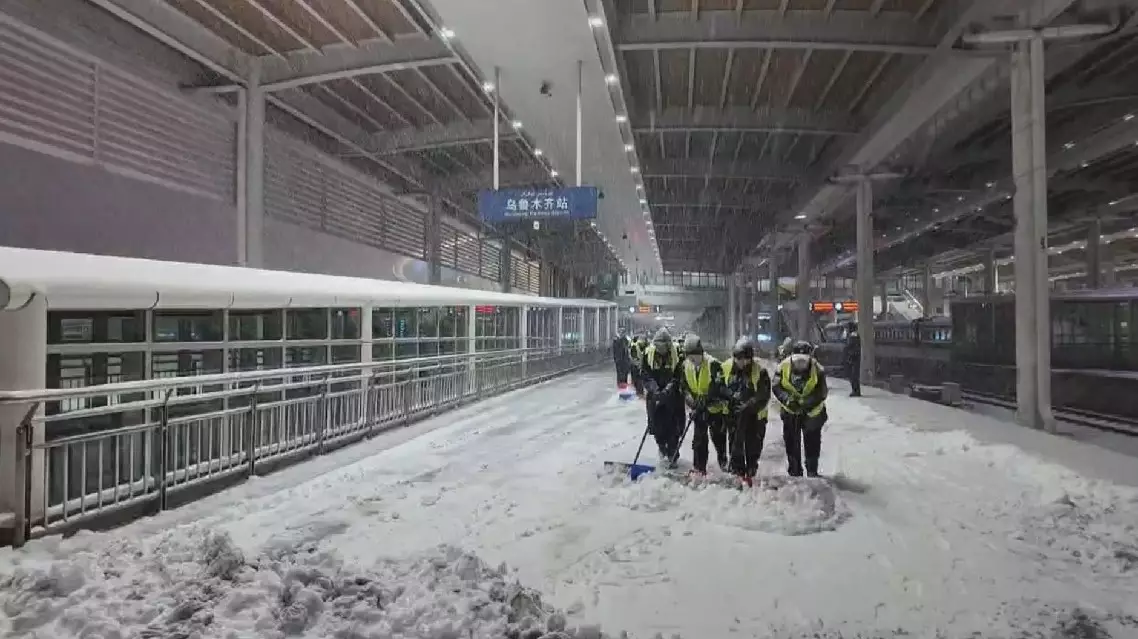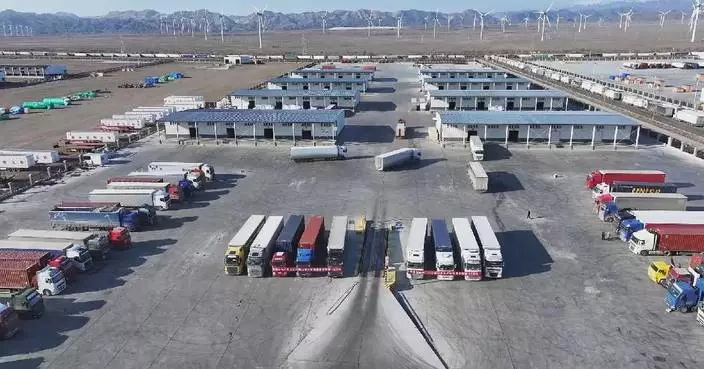The approaching winter in the Gaza Strip is a major cause of concern for its residents, most of whom were displaced by war and are seeking shelter in tent camps.
Some have resorted to building makeshift homes using broken concrete from war-damaged buildings and antiquated techniques to make mortar. Others are also scrambling to prepare shelters with limited resources, anticipating the cold winter nights in the besieged territory, where temperatures can drop to around six degrees Celsius.
"We have nowhere to go. We pitched a tent in this school, but the last time it rained, we were submerged by water. We managed to sort it out by building stairs to reach an empty classroom that we use as a shelter. Obviously, we are enduring cold and tough weather conditions. Overall, living conditions down here are very hard," said a young refugee girl in a destroyed neighborhood of Khan Younis.
"We managed to find a place within this school to live in. we came from the northern part of Gaza where we have lost everything. We have lost our only source of living which was a big supermarket," said a woman.
A few months into the war last year, heavy rains flooded the tents of hundreds of thousands of people displaced by fighting, leaving them even more vulnerable to the effects of the coastal territory's humid nights.
Although temperatures never fall below zero degrees Celsius, nighttime humidity seeps into clothes, creating a damp feeling that is hard to get rid of in such precarious living conditions.
"We are really suffering in this war, hopefully we'll get compensations of our destroyed homes and return back to school," said a young refugee boy.

Gazans brace for winter in temporary shelters built on rubbles

Gazans brace for winter in temporary shelters built on rubbles

Gazans brace for winter in temporary shelters built on rubbles
A cold wave has blanketed areas in northern China, bringing snow to some regions and prompting the National Meteorological Center to continuously issue blue cold wave warnings on Sunday.
China has a four-tier, color-coded weather warning system, with red representing the most severe weather, followed by orange, yellow and blue.
Parts of northern Xinjiang Uygur Autonomous Region in northwest China have experienced widespread snowfall and temperature drops in recent days. The railway authorities have taken measures such as suspending some passenger trains and mobilizing hundreds of workers overnight to carry out snow and ice removal operations.
At present, affected passenger trains are gradually resuming service.
Multiple regions of northwest China's Qinghai and Gansu provinces have experienced moderate to heavy snowfall from Saturday night to Sunday.
Road maintenance and traffic police departments have promptly carried out traffic management and snow removal operations to ensure smooth passage.
In some areas of Gansu's Zhangye City, snow accumulation reached up to 16 centimeters. While continuing snow removal on key road sections, local authorities have also increased patrols on bridges, culverts, and steep slopes to ensure the safety of travelers.
On Sunday morning, the Shaanxi Provincial Meteorological Bureau issued a blue snowstorm warning. From 10:00 Sunday to 10:00 Monday, most areas of northern Shaanxi, the northern part of the Guanzhong Plain, and parts of the Qinling-Bashan mountain range are expected to experience sleet or snow.
The National Meteorological Center predicts that from Sunday until Nov 28, temperatures will drop by 6 to 10 degrees Celsius across most of China.
During this period, many northern regions will experience widespread rain and snow, with Inner Mongolia and northeast region of China being the key areas for this rain and snow event.
It is expected that the heaviest snowfall will begin in northeast China's Heilongjiang Province on Tuesday, with local areas in the north possibly experiencing heavy to extremely heavy snowfall.

Cold wave brings snowfall, temperature drops to China's northern regions












